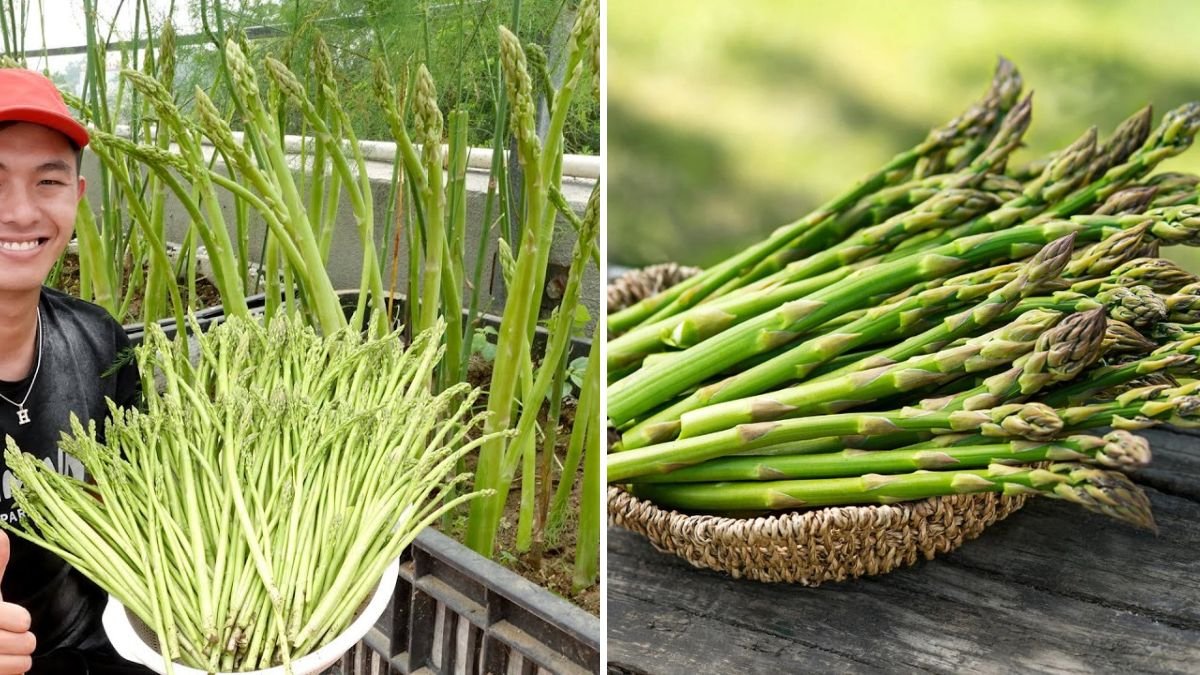Asparagus is a perennial vegetable known for its delicate flavor, tender texture, and incredible nutritional value. While it is traditionally grown in garden beds, you don’t need a large backyard to enjoy fresh asparagus. With a little creativity and the right techniques, it’s possible to grow asparagus on your terrace, producing more sprouts and achieving faster harvests. In this article, I’ll share my personal approach to terrace asparagus cultivation, including step-by-step guidance, tips for maximizing yield, and strategies for maintaining healthy plants.
Why Grow Asparagus at Home?
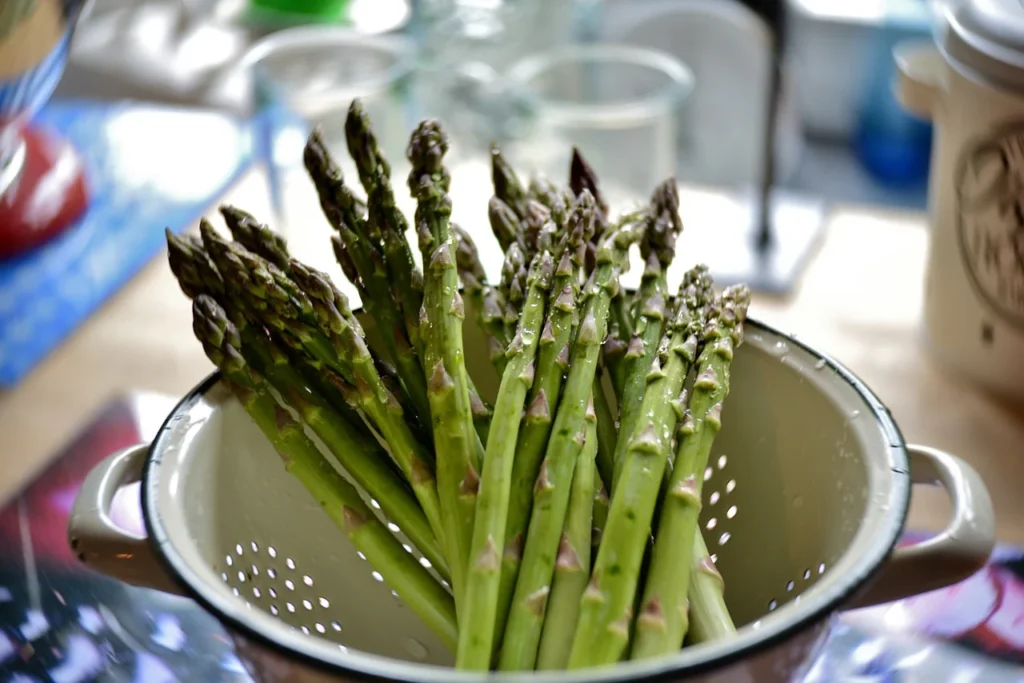
Growing asparagus at home comes with several advantages:
- Freshness: Nothing beats freshly harvested asparagus that is crisp and flavorful.
- Nutritional Value: Asparagus is rich in vitamins A, C, and K, folate, fiber, and antioxidants.
- Cost Savings: Growing asparagus at home reduces frequent trips to the store, especially for organic varieties.
- Urban Gardening Friendly: Terrace gardens allow city dwellers to grow perennial vegetables without large plots of land.
- Sustainability: Homegrown asparagus reduces food miles and chemical use.
With proper care, terrace-grown asparagus can produce abundant harvests year after year, making it a worthwhile investment in both time and space.
Choosing the Right Asparagus Variety
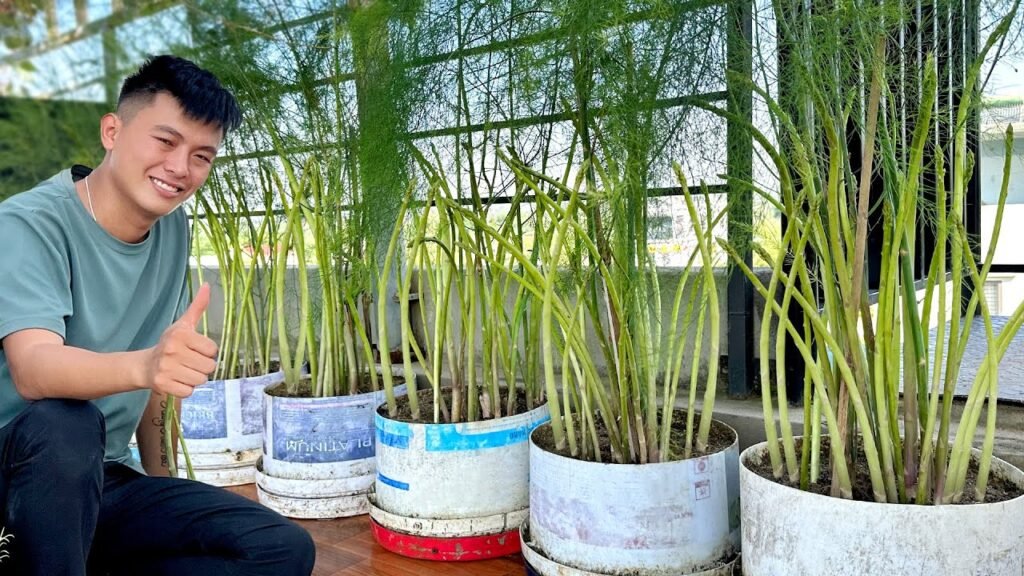
Selecting the right variety is crucial for terrace cultivation. Some popular varieties include:
- Mary Washington: Hardy, high-yielding, and widely available.
- UC 157: A high-yield variety with fast-growing spears.
- Jersey Knight: Resistant to disease and suitable for container growing.
For terrace gardening, choose compact or disease-resistant varieties that adapt well to containers and limited soil depth.
Preparing Containers for Terrace Gardening
Terrace gardening requires containers that can support perennial asparagus roots, which can grow deep and wide:
- Container Size:
- Choose pots or raised beds at least 18 inches deep and 18–24 inches wide.
- Larger containers support more plants and allow for better root development.
- Drainage:
- Ensure containers have sufficient drainage holes to prevent waterlogging, which can damage roots.
- Soil Preparation:
- Asparagus prefers loose, fertile, and well-draining soil.
- Mix garden soil with compost or organic matter for nutrients.
- Maintain a slightly acidic to neutral pH (6.0–7.0) for optimal growth.
A well-prepared container ensures strong root development and abundant spear production.
Planting Asparagus on the Terrace
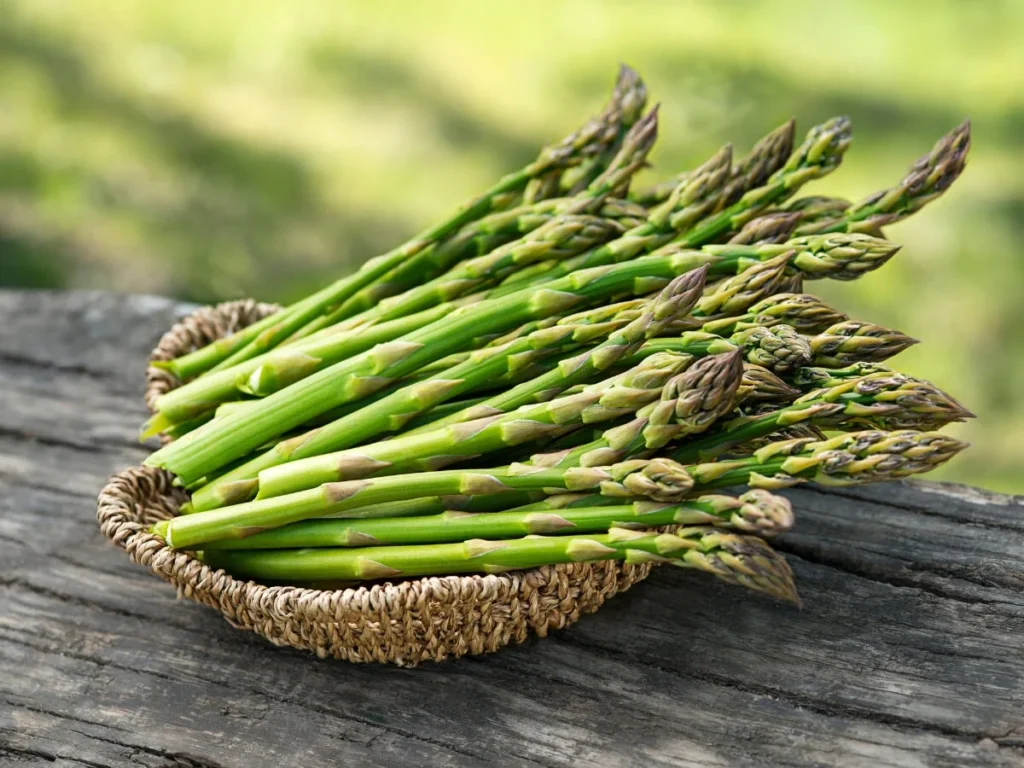
Asparagus is commonly grown from crowns (1-year-old roots) rather than seeds for faster results:
- Preparing Crowns:
- Soak asparagus crowns in water for a few hours before planting to hydrate roots.
- Planting Depth and Spacing:
- Dig a trench or hole about 6–8 inches deep.
- Place crowns with roots spread out evenly and buds facing upward.
- Cover with 2–3 inches of soil initially.
- Watering:
- Water immediately after planting to settle the soil.
- Keep the soil consistently moist but not soggy.
Proper planting ensures that asparagus establishes quickly and produces more sprouts.
Terrace Care and Maintenance
Caring for asparagus on the terrace requires regular attention:
- Watering:
- Water consistently, especially during dry spells, but avoid overwatering.
- Container-grown asparagus dries faster than in-ground plants, so monitor moisture frequently.
- Fertilization:
- Apply organic compost or balanced fertilizer during the growing season.
- Nitrogen-rich fertilizers promote spear growth, while phosphorus and potassium support root development.
- Mulching:
- Apply organic mulch like straw or dried leaves to retain moisture, control temperature, and suppress weeds.
- Supporting Growth:
- Asparagus ferns can grow tall; consider stakes or trellises to support stems and prevent wind damage.
Regular maintenance ensures healthy plants, more vigorous growth, and higher yields.
Encouraging More Sprouts
One of the goals of terrace asparagus gardening is to maximize spear production:
- Early Harvesting: Harvest spears when they are 6–8 inches tall for the best taste. Delaying harvest encourages ferns to grow and strengthens the plant.
- Fertilization Timing: Apply fertilizer after harvest to replenish nutrients and encourage the next flush of spears.
- Fern Management: Allow some ferns to grow fully in the first season to nourish roots, but trim excessive growth to focus energy on new spears.
By managing fertilization, harvest timing, and fern growth, you can increase the number of sprouts and shorten the time to a productive harvest.
Fast Harvest Techniques
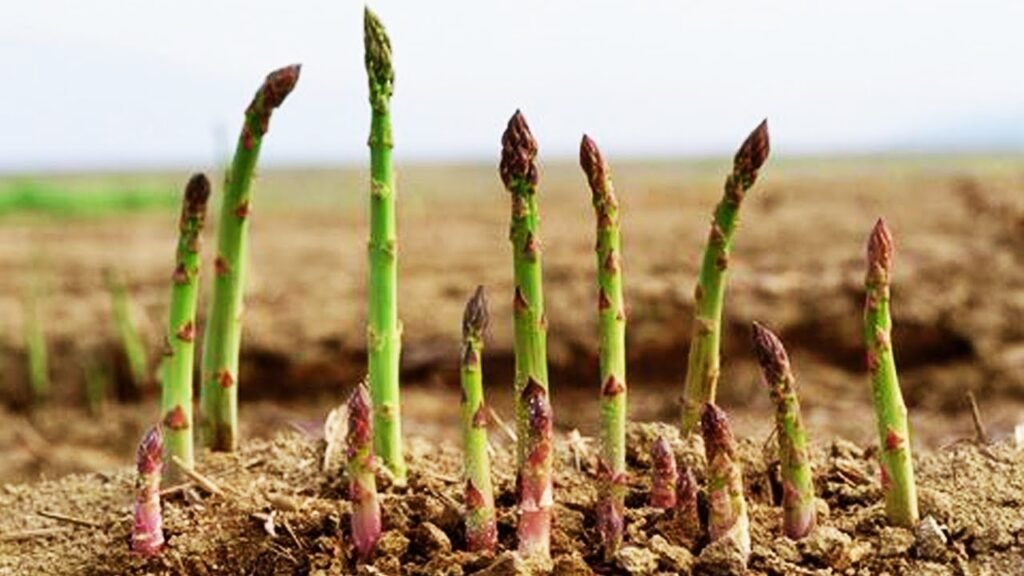
Terrace-grown asparagus can be harvested faster with these techniques:
- Use of Containers: Large, nutrient-rich containers allow roots to warm up faster, promoting quicker spear emergence.
- Sun Exposure: Place containers in areas receiving at least 6–8 hours of sunlight daily. Warm soil encourages faster growth.
- Succession Planting: Plant crowns in staggered intervals to have a continuous supply of fresh asparagus throughout the season.
These strategies help urban gardeners achieve multiple harvests and enjoy fresh asparagus consistently.
Pests and Disease Management
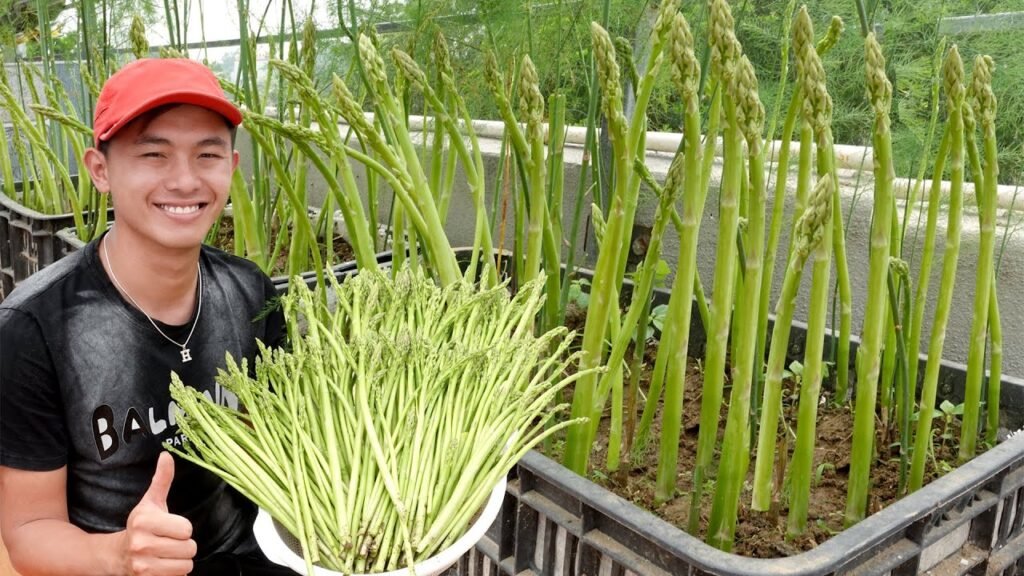
Asparagus can be affected by common pests and diseases, especially in container gardening:
- Common Pests: Aphids, cutworms, and asparagus beetles. Use organic insecticides or handpick pests.
- Diseases: Fusarium wilt or rust can occur. Ensure proper spacing, good air circulation, and avoid overwatering.
- Preventive Measures: Rotate planting containers or refresh soil every few years to reduce disease risk.
Monitoring plants regularly ensures a healthy and productive terrace asparagus garden.
Harvesting Asparagus
Harvesting is the most rewarding part of asparagus gardening:
- Timing: Spears are ready when they are 6–8 inches tall and before tips start to open.
- Technique: Gently snap or cut spears at soil level. Avoid pulling to prevent damage to roots.
- Frequency: Harvest every 2–3 days during peak season to encourage continuous production.
Regular, timely harvesting ensures tender spears and promotes the growth of more shoots.
Benefits of Terrace-Grown Asparagus
- Space-Saving: Ideal for urban homes without garden beds.
- Continuous Yield: With proper care, terrace asparagus produces multiple harvests per season.
- Organic and Fresh: Grow chemical-free, fresh asparagus in your own home.
- Aesthetic Value: Tall asparagus ferns add greenery and beauty to terraces.
- Sustainable Gardening: Reduces reliance on store-bought asparagus, lowering food miles.
Terrace-grown asparagus combines practicality, beauty, and productivity, making it perfect for urban gardening.
Tips for Success
- Select high-yield and disease-resistant varieties.
- Use deep, well-draining containers filled with nutrient-rich soil.
- Ensure full sun exposure for faster growth.
- Maintain consistent watering and fertilization schedules.
- Mulch containers to retain moisture and suppress weeds.
- Harvest spears early and regularly for tender, flavorful shoots.
- Manage fern growth to focus plant energy on new spears.
Following these tips maximizes terrace asparagus yield and shortens the time to harvest.
Conclusion
Growing asparagus on the terrace is a rewarding and surprisingly simple method to enjoy fresh, tender, and nutritious vegetables at home. By selecting the right variety, preparing containers, planting crowns correctly, and maintaining proper care, you can achieve faster harvests and more sprouts. This approach is perfect for urban gardeners looking to make the most of limited space without compromising yield or quality.
With a little patience, consistent care, and smart techniques, your terrace can become a productive asparagus garden that provides delicious, homegrown spears season after season. Whether for daily meals or special dishes, terrace-grown asparagus allows you to enjoy the satisfaction of cultivating your own food, even in the heart of the city.
